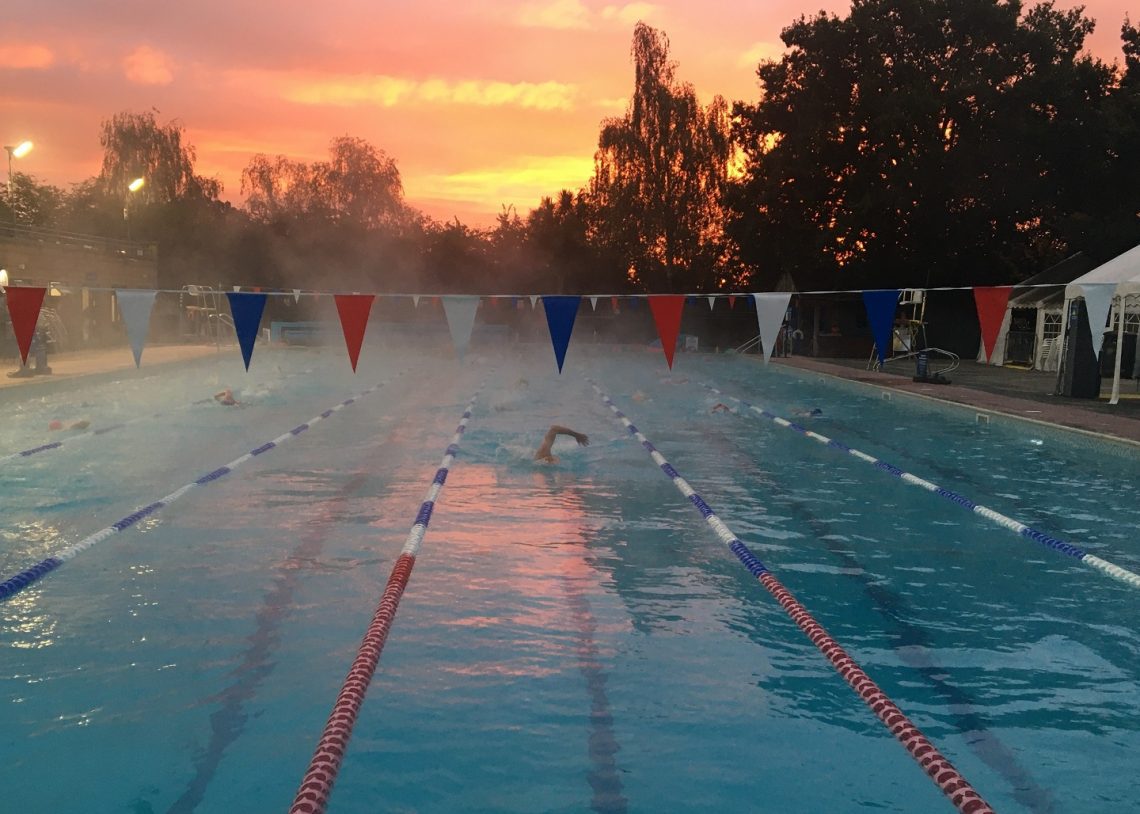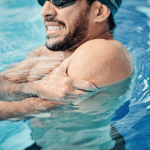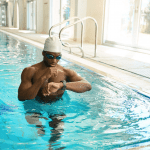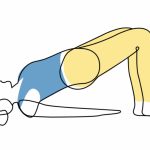
How to prepare for a swim training session
When you prepare for a swim training session, it can make a big difference to how you feel in the water and how well you swim.
If you’re anything like me, arriving at a training session before the warm-up has finished counts as a success. There is often simply too much to do during the day to allow any more preparation than grabbing your kit and racing there at the last minute, possibly eating a snack on the way. I’ll then spend the first part of the session letting go of the day’s stresses and digesting whatever I’ve just eaten.
Most of us are not elite athletes. Our swimming or sport is not the most important thing we have to fit into the day. But if you occasionally find the time and capacity to organise and prepare for a training session, it can make a big difference to how you feel in the water and how well you swim. It can also help reduce the risk of injury and, if you can do it regularly, help you improve your swimming.
Given that many of us have busy lives, it will probably be a rare day when you can follow all the steps below to prepare for a swim. Treat this is an idealised aspirational list for an exceptional day rather than something you must do for every session. The more of them you do, the better. Even doing one or two makes a difference. Doing them all is next level. And if you can’t do any? So be it. You can still enjoy your swim.
Pre-swim routine for a daytime or evening session
- Throughout the day: Keep stress to a minimum. Do some light exercise such as a walk or a gentle bike ride. Avoid over-eating.
- Three to four hours before: try taking a 20 to 40-minute nap or doing some eyes-closed relaxation or meditation
- Two to three hours before: eat a nutritious meal that leaves you satisfied but not stuffed
- One to two hours before: get everything you need for the session ready and packed
- Final hour: 15 to 20-minute mobility and injury prevention routine. Drink water or herbal tea.
- Travel to session in good time. If walking, running or cycling there, go at an easy pace. Listen to whatever music you want playing on repeat in your head while you swim (unless cycling!)
- Be ready at least 5 minutes before the session starts and do more light mobility exercises while waiting to enter the water.
If you have an early morning training session, then some of your preparation should be done the night before.
Pre-swim routine for an early morning session
- Night before: Eat a nutritious meal several hours before going to bed. Prepare and pack everything you need for the morning. Do 20 to 40-minutes of mobility exercises, injury prevention and stretching. Prepare a light pre-swim snack to eat in the morning (e.g. overnight oats)*. Try to be in bed with lights out 8 hours before you need to get up.
- On waking: Drink water or herbal tea and eat your pre-swim snack. Do 5 to 15 minutes of gentle mobility and injury prevention exercises.
- Follow steps 6 and 7 above.
*Note: The pre-swim snack is optional. Some people prefer the extra few minutes in bed and to train fasted. Try both and see what works for you.
Realistically, most of us have too much going on in our lives to prepare for every training session like this. Turning up late and unprepared for training is still far better than not going at all. Your goal for the session could simply be to snatch some precious time to do something for yourself. Your preparation might consist of clearing as many chores from your to do list as you can to increase the likelihood that you can relax. You certainly shouldn’t feel bad if you can’t achieve an idealised preparation routine. Still, if you have the opportunity, it’s worth experimenting with a pre-swim preparation routine.
Read more about training and technique for outdoor swimming. Image by Isabel Young.








